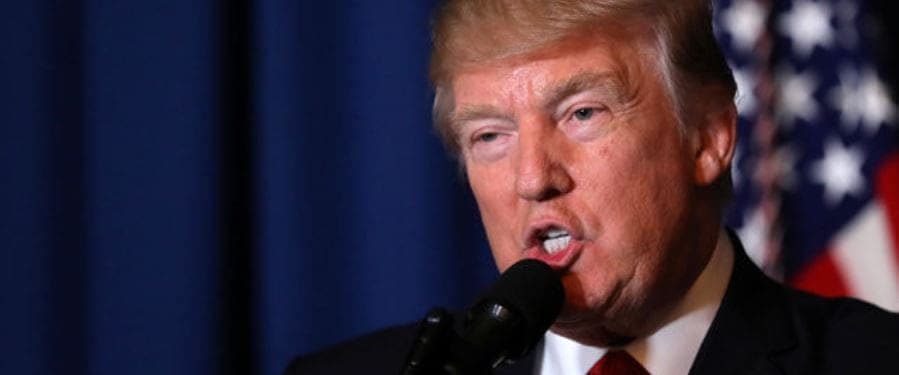Donald J. Trump has just yanked the United States out of the Trans-Pacific Partnership (TPP) – a multilateral agreement negotiated under the Obama administration – by signing an executive order, apparently declaring an end to the era of multinational trade agreements.
But despite the absence of the U.S., the ministers from the eleven remaining TPP countries – which include Australia, Brunei, Canada, Chile, Japan, Malaysia, Mexico, New Zealand, Peru, Singapore, and Vietnam – have achieved a decision (after a series of frenetic meetings during the Asia-Pacific Economic Cooperation (APEC) summit in Da Nang, Vietnam in November 8-10, 2017) to affirm their intention to move forward with the TPP. However, more work has to be done to reach a full agreement as Malaysia and Vietnam prefer the agreement with the U.S. back in it; while Australia, Canada, Japan, and Mexico are very keen to move forward.
Why did Trump withdraw from the TPP?
Trump has dismantled Barack Obama’s legacy by formally scrapping the flagship trade deal with eleven countries in the Pacific Rim.
“Great thing for the American worker, what we just did.”, he proudly told the White House press corps after signing the memorandum on January 23, 2017, in the Oval Office of the White House in Washington.
Trump’s decision not to join the TPP wasn’t a surprise at all as he repeatedly railed against international trade deals during his presidential campaigns, just like in Ohio, saying, “The Trans-Pacific Partnership is another disaster, done and pushed by special interests who want to rape our country. Just a continuing rape of our country.”
And it seemed like it’s not only Trump who wanted to ditch the TPP, but whoever got into the White House as well – including Hillary Clinton who came out against the deal, saying, “I will stop any trade deal that kills jobs or holds down wages, including the Trans-Pacific Partnership. I oppose it now, I’ll oppose it later after the election, and I’ll oppose it as president.”
So, what is TPP and why do people, particularly Trump, hate it so much?
A trade deal without trade benefits.
The TPP, pushed hard by the Obama administration, is a strategy to maintain the dominance of the U.S. in Asia to ward off China’s growing economic influence. It could have been done through creating a single market for the eleven countries bordering the Pacific Ocean and making goods flow more freely and cheaply between all partners – an idea that if everyone brings taxes down on exported goods, the U.S. companies will pay less for imports while benefiting from cheaper labor overseas.
In a study done by the Peterson Institute for International Economics (PIIE), it was estimated “that the world income would rise by $295 billion per year”. While Obama’s White House computed that around 650 000 jobs will increase.
However, according to Ali Velshi, an MSNBC business correspondent – the main issue with the TPP deal is there is no mandate that the companies (the government is helping to create wealth) should spend on hiring or wages. There is no benefit since companies get to share profits with shareholders and the government gets the taxes, but the workers don’t get their fair share.
Trump has repeatedly reiterated his slogan “America First” focusing on American interests and claiming to grow the American economy, “return millions of jobs to America’s shores”, and revitalize America’s suffering communities – which clearly states why he has withdrawn from the TPP.
However, as the U.S. bowed out of the agreement, China has all the opportunities to make attractive agreements with the Pacific Rim countries. In addition to this, cheap imports to America could lead to higher prices.
Why are Japan and Australia hell-bent on saving the TPP?
The so-called TPP 11 (the remaining signatories to the TPP) have announced the salvaging of the trade pact that was abandoned by the U.S. – for which Japan and Australia have led the fight to save the said agreement.
Japan has subsequently acted as the principal driving force in keeping the deal alive in America’s absence. Rushing to become the first country to ratify the TPP, it cannot afford to see the trade fail – primarily because of a number of reasons.
First, Japan has to settle for the “core elements of the deal” called the “Comprehensive and Progressive Agreement for Trans-Pacific Partnership” (CTPP) which all parties agreed to require further work before the TPP-11 can be considered a done deal.
Second, from the start of Japan’s participation in the TPP negotiations in May 2013, Prime Minister Shinzo Abe touted the agreement as “engine of growth” for the Japanese economy. Being pushed by the leaders of economic organizations including Sadayuki Sakakibara, the head of the Japan Business Federation, Abe is under domestic pressure to achieve the prompt realization of the agreement.
In hopes of doing so, Abe was the first foreign leader to meet with Trump after the U.S. elections and his government continues to reach out and convince the Trump’s transition team to revive the deal. Help from other TPP signatories by ratifying the deal themselves, including Canada, is also being asked by Japan to send a message to the U.S.
Australia, on the other hand, is also holding out hope for it’s so-called “TPP 12 minus one”. And like Japan, the delay in reaching a broad agreement would be a keen disappointment for Australia – because of the following reasons:
The TPP agreement will abolish 98 percent of tariffs within the region. Meaning, this could remove the import taxes on the $9 billion dollars of Australian trade (i.e., beef, dairy, seafood, wine, and resources and energy) making the trade considerably cheaper. Also, the deal could potentially see more Australian jobs and increase the products that Australian business are allowed to export.
In the absence of America from the agreement, Australia has never lost hope that Trump will change his mind, saying, “It’s important to leave the door open to the United States. It may not suit U.S. interests at this point in time to be part of the TPP, but circumstances might change in the future.”
However, despite TPP’s largest goal to counter China’s growing economic influence, Australia opens its doors to China to replace the U.S. – as what Australian diplomat Alexander Downer told BBC’s Today programme. But would it be favorable for Japan which has long been rival with China?
China is Japan’s top trading partner and has been pushing its own alternative to TPP, known as the “Regional Comprehensive Economic Partnership” (RCEP) – which will be the only game of town that Japan has to deal with if the TPP fails to push through.
Over the years, Japan and China’s relations are still mired in tension (i.e., the dispute over the Diaoyu Islands, Nanking incident, and the ancient wars). However, if Donald Trump remains negative on the TPP, it will be important for Japan to set aside the rivalry and push for cooperation with China and the RCEP.
But still, that is Plan B. Japan’s Plan A remains to salvage the TPP.












